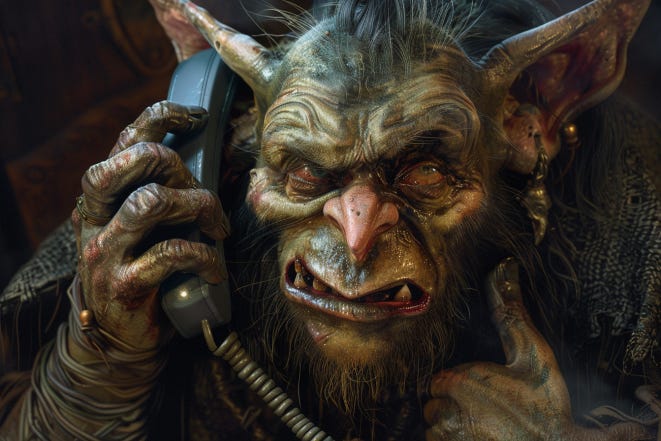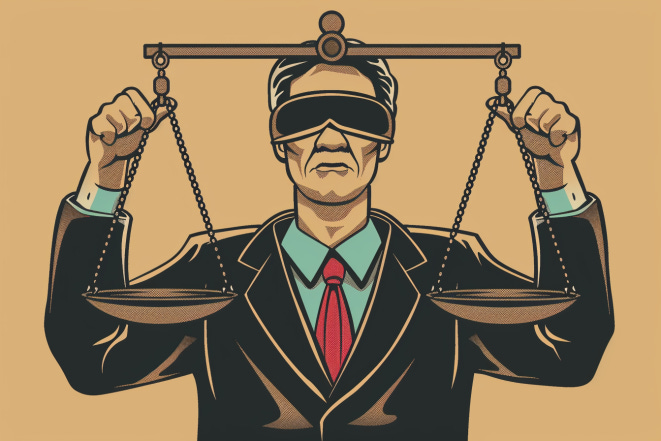First, the anti-trans hysteria accidentally came for a cisgender girl
A former OHSAA investigator details how anti-trans hysteria started in Ohio high school athletics with one phone call from highly mistaken grandparents.
Transgender people make up approximately 1.7 percent of the population in the United States.
Despite that small percentage, the ACLU counts 515 bills across the country targeting trans people in 2024 alone, including seven in Ohio.
In January, Ohio became the 21st state to ban transgender athletes from participating in sports at the K-12 and collegiate level after the legislature overrode Governor DeWine’s veto on the measure (the law is currently on hold thanks to an ACLU lawsuit). But how did the trans athlete ban first make its way to Ohio?
I started working at the Ohio High School Athletic Association (OHSAA), the private non-profit that oversees interscholastic athletics for junior high and high schools in Ohio, in 2013 and left in 2021.
In 2014, due to requests from member schools on how to handle trans athletes, OHSAA created a trans athlete participation policy.
The most up-to-date version of that policy can be found here.
It isn’t an easy process. Male-to-female (MTF) transgender athletes must be on hormone therapy for a year and have a doctor state they don’t possess an unfair or unsafe physical advantage in order to play sports. That approval has to be redone every year.
From the inception of the rule, a total of nineteen MTF transgender athletes have competed in OHSAA sports at the junior high or high school level.
OHSAA estimates that 400,000 student-athletes participate in sports each year. If we assume half of those are girls, just 19 athletes out of two million who have participated in the last decade are transgender females.
It’s an infinitesimally small percentage, and while the law will clearly affect transgender female athletes, it will also affect cisgender girls.
In 2019, the OHSAA received a call from a State Senator asking about the transgender athlete policy. To help protect the identity of the student-athlete involved, I will not name the State Senator, who is no longer in the Senate.
The office provided a copy of the policy and asked if there was an issue. The State Senator stated their office had received a complaint from two grandparents who went to watch their daughter’s eighth-grade basketball game and were upset to watch a trans female dominate the contest.
They wanted something done.
This was a surprise to us at the OHSAA. In the five years the policy had been in place, we had received zero complaints. It also surprised us because our records did not show that we had any transgender female athletes in the eighth-grade playing basketball.
We asked for and received the name of the school from the State Senator so we could follow up with them. Upon calling the school, we learned they did not have a trans athlete.
They did have a girl who was large for her age and had a short haircut. She was, in fact, the best player on their basketball team.
But she was a cisgender female.
Yes, that’s right. The trans athlete panic in Ohio didn’t start due to a trans athlete.
It started due to a cis girl who apparently didn’t look feminine enough for the old folks’ liking. After relaying this information back to the Senator, we thought the matter would be closed.
To our continued surprise, the “Save Women’s Sports Act” was first proposed in Ohio in 2020 by State Rep. Jena Powell (R-“Arcanum”).
This was not in response to any complaints or valid concerns; it was simply grievance politics and attacking a marginalized group, part of a coordinated right-wing effort of copycat legislation among states that began with Idaho passing the first trans athlete ban in 2021.
It took four years for a version of the law to finally pass in Ohio.
To do it, legislative Republicans coupled the bill with a ban on gender-affirming care for minors—effectively making the sports ban at the K-12 level redundant.
Trans youth athletes can’t compete in sports if trans youth athletes don’t exist in the first place. Why is the law even needed? To police those who anyone suspects of being trans, meaning women who aren’t feminine enough.
Restrictions on transgender athletes have always been a devious mix of transphobia and misogyny.
There’s a reason only male-to-female athletes are forbidden from participating in sports, but not female-to-male athletes who are taking testosterone.
Despite failing to pass the law multiple times, 2024 was when the conservative mania in the statehouse was high enough to not only pass the law but also override a veto. Opponents of the restrictions had to win the fight every time the law was proposed.
The legislature just had to win once.
OHSAA has released statements that politely say they don’t think the law is necessary and would like to allow transgender athletes to participate. But for a statewide multimillion-dollar organization, the support, if you can call it that, rings hollow.
When the current Executive Director of the OHSAA, Doug Ute, submitted testimony in regards to the trans athlete ban, it was neither an opponent nor a proponent but just an “interested party.”
He did not show up to testify in person despite the OHSAA offices being in Columbus.
He simply submitted a letter. While vaguely alluding that the law is unnecessary, the final paragraph of his statement says, “We offer to this committee our willingness to work with you to strengthen our policy if necessary.”
A stronger stance isn’t taken because Ute is unwilling to get involved in something that is even remotely controversial.
In 2021, the Trevor Project, which describes itself as “a non-profit suicide prevention organization that provides 24/7 crisis support services, research, and advocacy for LGBTQ+ youth,” reached out to OHSAA about a partnership due to the stigmas and barriers LGBTQ+ athletes encounter. Ute shot it down as “too political.”
Keeping LGBTQ+ athletes alive is “political.”
As we celebrate Pride in the biggest moral panic in decades, I wanted to make sure this story got told. I thank The Rooster for the opportunity to tell it.
I worked in sports for over a decade while in the closet before coming out as non-binary and pansexual. Sports isn’t the most welcoming environment for LGBTQ+ people.
It isn’t even the most welcoming environment for cis people, as evident by the first complaint about a trans athlete in the history of Ohio not even being made against a trans person. None of these laws are proposed in good faith or by rational people.
But despite the current flood of hateful legislation, there is light at the end of the tunnel. A conservative Supreme Court still gave us the Bostock ruling.
New Title IX regulations from the Department of Education are expected in November to formally forbid blanket transgender athlete bans. A rapid rise in gay marriage bans preceded gay marriage being fully legalized.
Be hopeful. Be proud. Be you.







Thanks D.J. and Ben for this piece.
Thank you and The Rooster for this story I would not have seen elsewhere. Re: Ute. Haters gonna hate, but cowards don't have to coward.